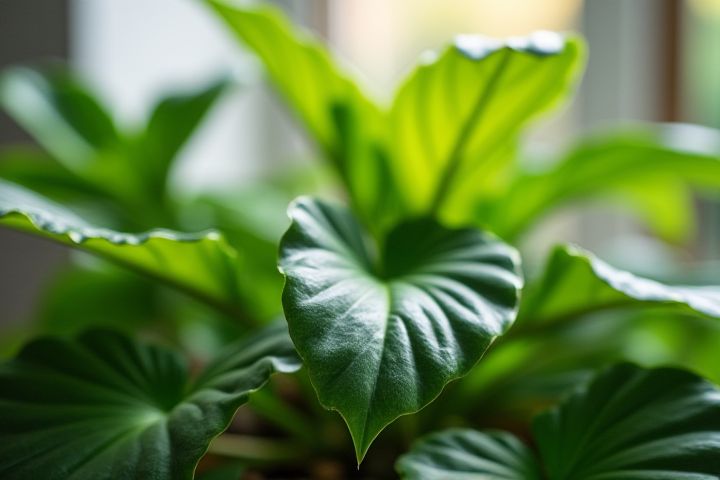
Certain houseplants are well-known for their air-purifying abilities, contributing to a healthier indoor environment. For instance, the Snake Plant (Sansevieria) is renowned for its ability to filter toxins like formaldehyde and benzene while also releasing oxygen at night. The Spider Plant (Chlorophytum comosum) excels at removing pollutants such as xylene and carbon monoxide, making it an excellent choice for homes. Peace Lilies (Spathiphyllum) not only brighten your space with their beautiful white blooms but also help absorb harmful substances like ammonia and trichloroethylene. Incorporating plants like these into your living areas can significantly improve air quality and promote overall well-being.
What Houseplants Purify Air
Spider Plant
Spider plants, also known as Chlorophytum comosum, feature long, arching leaves with a vibrant green hue and are effective in removing indoor pollutants. Studies have shown they can eliminate up to 90% of formaldehyde, carbon monoxide, and xylene from the air, contributing significantly to healthier indoor environments. Spider plants are incredibly easy to care for, thriving in various light conditions and requiring minimal watering--about once every 1-2 weeks. With the potential to produce multiple offshoots, or "pups," they can easily multiply, making them an attractive and functional choice for enhancing air quality in your home.
Snake Plant
The Snake Plant, also known as Sansevieria or Mother-in-Law's Tongue, is an exceptional houseplant that enhances indoor air quality by filtering out toxins such as formaldehyde, benzene, and xylene. Its unique ability to perform photosynthesis at night allows it to improve oxygen levels even during dark hours, contributing to a healthier living environment. Low maintenance and drought-resistant, the Snake Plant thrives in a variety of light conditions, making it an ideal choice for any room in your home. Incorporating this resilient plant into your space not only beautifies it but also ensures a breath of fresh air in your daily life.
Peace Lily
The Peace Lily, known for its elegant white blooms and glossy green foliage, is a top choice among houseplants that purify air. This low-maintenance plant effectively removes toxins like formaldehyde, benzene, and ammonia from your indoor environment, enhancing air quality. With its ability to thrive in low light conditions, the Peace Lily adds both aesthetic value and health benefits to your home. Placing this beautiful plant in your living space can create a calming atmosphere while promoting cleaner air for you and your loved ones.
Boston Fern
The Boston Fern (Nephrolepis exaltata) is a top choice among houseplants for purifying indoor air, capable of removing pollutants such as formaldehyde and xylene. This lush, arching plant thrives in high humidity and indirect sunlight, making it ideal for bathrooms or kitchens where moisture is present. Studies have shown that in a 24-square-foot room, a few Boston ferns can reduce air toxins significantly, resulting in cleaner, fresher air. Care for your Boston Fern by maintaining consistently moist soil and misting the leaves regularly to enhance its air-purifying abilities.
Bamboo Palm
Bamboo Palm, scientifically known as Chamaedorea seifrizii, is an excellent houseplant that effectively purifies indoor air by removing toxins such as formaldehyde, benzene, and trichloroethylene. This hardy plant thrives in indirect sunlight and prefers well-drained soil, making it suitable for various indoor settings, including offices and living spaces. Its lush, feathery fronds not only add a touch of greenery to your environment but also help to increase humidity levels, benefiting respiratory health. Incorporating Bamboo Palm into your home can enhance air quality and promote a healthier living atmosphere.
English Ivy
English Ivy (Hedera helix) is a popular houseplant known for its air-purifying properties. It effectively reduces airborne mold, formaldehyde, and benzene, making it a valuable addition to indoor spaces. Positioned in bright, indirect light, English Ivy thrives in well-draining soil and requires regular watering to maintain its vibrant green foliage. Your commitment to caring for this plant will not only enhance your home's aesthetic but also contribute to a healthier indoor environment.
Aloe Vera
Aloe Vera (Aloe barbadensis miller) is renowned for its impressive air-purifying qualities, effectively removing formaldehyde and benzene, two harmful chemicals commonly found in household products. This succulent thrives in well-drained soil and requires minimal care, making it an ideal choice for both novice and experienced plant enthusiasts. Research indicates that having one Aloe Vera plant can significantly improve indoor air quality, contributing to a healthier living environment. Placing your Aloe Vera in a bright, indirect light location enhances its growth and maximizes its air-purifying benefits.
Rubber Plant
The Rubber Plant (Ficus elastica) is an excellent houseplant for improving indoor air quality, renowned for its ability to filter out harmful toxins like formaldehyde and benzene. With its glossy, dark green leaves, it not only enhances the aesthetic of your space but also works efficiently to absorb pollutants. This low-maintenance plant thrives in indirect light and requires minimal watering, making it ideal for beginners. Placing a Rubber Plant in your home can lead to improved air circulation and a healthier living environment.
Dracaena
Dracaena, particularly the varieties such as Dracaena marginata and Dracaena fragrans, are among the top houseplants known for their air-purifying abilities. Notably, NASA's Clean Air Study identified Dracaena as effective at removing toxins like formaldehyde and benzene from indoor environments, making them valuable for improving air quality. With their height reaching up to 6 feet, these plants not only enhance aesthetics but also contribute to a healthier living space. To thrive, they require moderate indirect light and infrequent watering, making them ideal for busy individuals seeking low-maintenance greenery.
Gerbera Daisy
The Gerbera Daisy, known scientifically as Gerbera jamesonii, is a captivating houseplant that not only enhances your indoor aesthetics but also contributes significantly to air purification. This vibrant flowering plant effectively removes toxins such as formaldehyde and benzene, improving the overall air quality in your home. With its striking colors and cheerful blooms, the Gerbera Daisy thrives in bright, indirect sunlight and requires well-draining soil to flourish. Incorporating this beautiful plant into your space can elevate both your decor and your respiratory health.
